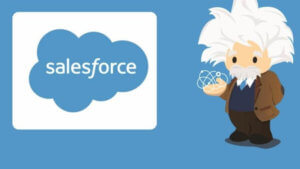How to Use Salesforce for ABM
In recent years, many marketing departments and firms have made the shift to an account based marketing (ABM) approach for their B2B marketing efforts. At a high level, account based marketing is precisely what it sounds like – marketing to targeted accounts that are perceived to have high value to your organization. Organizations will define a select group of target accounts and market directly to those few accounts using a highly-targeted messaging and strategy.
One of the benefits of ABM is that you can not only tailor your campaign to specific accounts, but you can get as granular as persona targeting. Rather than casting a wide net and wasting resources on unqualified prospects, ABM is an opportunity to focus on the decision makers. ABM is not necessarily a new strategy, but before digital advances made it practical and trackable, it was notoriously difficult to manage and scale, and therefore, avoided. Salesforce noticed this trend and has since made efforts to enhance how their platform assists with this trend in marketing methodologies.
Salesforce launched Einstein ABM in 2016 – an AI platform designed to accelerate ABM efforts. Some of the key ABM tactics that this platform boasts the ability to improve upon are:
- Identifying the right accounts
- Improving customer engagement
- Aligning sales and marketing
- Measuring and optimizing campaign performance
Teams who have leveraged Einstein ABM can attest to its ability to help optimize ABM tactics, including results reporting. That said, whether due to budget or technology constraints, not all teams have access to Einstein ABM. Luckily there are ways to use the traditional Salesforce platform to effectively improve and execute your organization’s ABM efforts.
The first step that Einstein ABM addresses is “identifying the right accounts.” Einstein uses artificial intelligence to identify the right accounts, but there is nothing stopping you from using your current Salesforce org as a giant resource to identify the right accounts manually. To analyze and refine your database for target accounts, it is important to consider:
- Company information: company size, location, industry, etc.
- Opportunity information: opportunity size, number of opportunities, etc.
- Contact/lead information: role/level, how much attention/interaction a contact needs to get a deal closed, etc.
All of this information is at your disposal in your current Salesforce org and can help you to begin creating your own ABM strategy.
The second component that Einstein ABM assists with is “improving customer engagement”. Once you have analyzed your current customer base and established a target audience, Salesforce also provides the tools and information to help you improve customer engagement. For example, say you want to market to supervisors in the healthcare industry. You can use Salesforce’s built in reporting tool to pull a list of anyone in your database that fits these criteria. Then, you can engage with these leads using messaging and strategy that is directed at their specific pain points.
“Aligning sales and marketing” is another critical ABM attribute that Einstein ABM simplifies. But it’s not the only way to do so. Using your existing Salesforce platform, you can create and save email templates that outline specific messaging for sales to utilize. This ensures the messaging remains consistent throughout the handoff from marketing to sales, for all leads and contacts. For example, a marketer could outline a “First Touch – Healthcare” email, and save it in a “Healthcare ABM” folder. A salesperson would simply look for this email on the contact or lead record they wish to reach out to and trigger the send. Additionally, a salesperson can enroll leads or contacts into ABM campaigns based on conversations or company profile. For example, if a salesperson conducts a phone call with someone that he or she believes to be a fit for the Healthcare ABM Campaign, he or she can enroll this prospect manually. This can be as easy as adding them to a Salesforce defined campaign, or updating a custom field with descriptive sales notes.
Lastly, Einstein ABM defines the final step in the ABM process as “measuring and optimizing campaign performance.” This may be the part that Salesforce does best. As long as you define your audiences and campaigns, Salesforce reporting can be your best friend. To make sure you are tagging your defined audience (and only that audience) appropriately, you can leverage Salesforce’s free tool, “Data Import Wizard,” to import your list.
As noted above, if you have added leads/contacts tied to specific campaigns, or have tagged them in a custom field, you can build out reports based on those fields. For example, say you want a report on total opportunity size for your Healthcare ABM campaign, you can pull an opportunity report for anyone tagged with that campaign and obtain an aggregate (or in Salesforce terms, “summary”) report.
While Salesforce has made great efforts to stay ahead of the game of marketing strategy and methodology with new platforms like Einstein ABM, it inherently offers the tools and functionality you need to be successful.
Want to learn more about Salesforce capabilities? Contact SmartAcre today.


